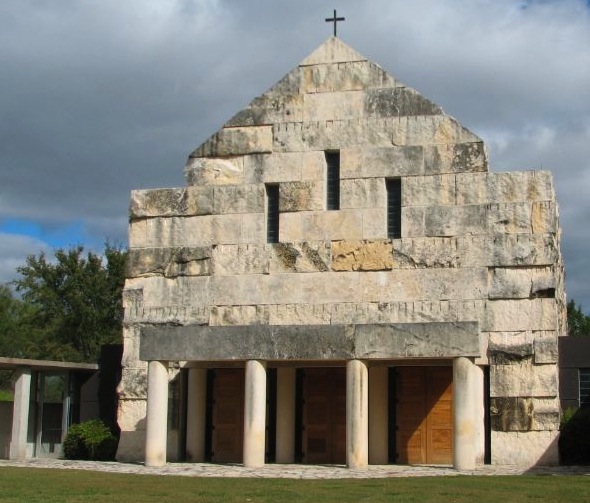 There is so, so much to like in the recent Dallas Morning News profile of a young Texan who is wrestling with the ultimate decision of whether or not to become a monk in the Cistercian community at Our Lady of Dallas, a monastery in Irving, near Dallas.
The writing of Avi Selk is a joy to read. The personal anecdotes ring true and the details from life in the monastic community are handled with calm, solid, simple language -- not the kind of smoky, mysterious verbiage that frequently gets poured over this kind of subject. You know, rank after rank of holy adjectives.
There is so, so much to like in the recent Dallas Morning News profile of a young Texan who is wrestling with the ultimate decision of whether or not to become a monk in the Cistercian community at Our Lady of Dallas, a monastery in Irving, near Dallas.
The writing of Avi Selk is a joy to read. The personal anecdotes ring true and the details from life in the monastic community are handled with calm, solid, simple language -- not the kind of smoky, mysterious verbiage that frequently gets poured over this kind of subject. You know, rank after rank of holy adjectives.
The basic idea is simple enough: A math geek from Texas A&M University named Edmond Brophy is slowly evolving into Brother Lawrence. Here is one of the short, punchy passages that make up this episodic feature story:
In Ed Brophy's freshman year of college, his calling was hard to hear above the dorm-room din. Here was more freedom than he'd ever known. Mixers, drinking games, Aggie football, Aggie baseball, Aggie basketball.
"I enjoyed dorm life," he says. "Coming home at 2 a.m. And as long as the grades came back fine, it was fine."
But by his senior year, he was beginning to fear his own "worldliness." Always, in the back of his mind, was Our Lady of Dallas, the monastery beside his Catholic prep school -- and the old monks who had taught him math and Greek and piety. About the time his father gave him a Saab -- "a young professional's car" for his future career in mathematics -- Brophy broke up with his girlfriend "because I thought I might be a priest."
By his graduate year, he was going to Mass every day. His calling had become a clamor.
We learn some vital information about this order, such as the fact that it is growing in an era when young priests and monks are hard to find. Anyone who knows anything about recent trends in Catholicism will be tempted to assume that this order must be rather traditional in terms of doctrine and practice, but these complicated subjects are never really addressed.
The monks pray and work and study. They share meals and a few beers. They think about obedience, stability, poverty and celibacy -- a lot. They think about the implications of their choices on their families. They pray some more.
Life rolls on. Young monks help care for old monks, while learning valuable lessons from their elders. Consider this episode:
In the winter of Brother Lawrence's novice year, his frustrations exploded -- a heated argument with the novice master over some small thing.
"I was furious," he recalls. "With my Irish temper, I get so upset I can't talk."
As he stormed away, his face red, the young monk saw the novice master's coat hanging on the banister. For a split second, the temptation to throw it down the stairs was overwhelming.
"I realized I wasn't any closer to Christ," he says. "I was the same person I was when I entered. I freaked out."
There are many interesting characters in this quiet drama. However, as I read the story, I realized that one crucial character was missing and his absence, over time, became rather obvious. Actually, under Associated Press style I am allowed to say His absence, with a Capital "H."
You see, other than the one reference to Christ mentioned above, this story includes no references whatsoever to Jesus Christ or the details of this young man's faith -- which I would think is a rather important piece of his personal pilgrimage toward final vows and his life as a monk and priest.
I am not saying that the story needed to be wrapped in religious language and buried in flowery Trinitarian talk. I know that isn't an appropriate approach when writing in a major newspaper. However, at some point, wouldn't it acceptable to let this fascinating young man discuss his own growing understanding of his vocation? I mean, doesn't Divine Love have something to do with all of this?
Just asking.
